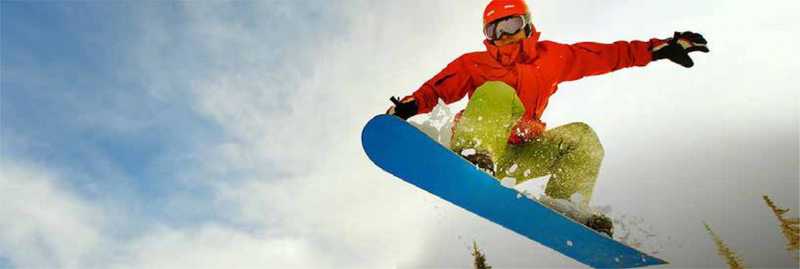
Downhill skiing and snowboarding are widely popular winter sports, but they can also be dangerous sports if safety precautions aren't taken. According to the Canadian Ski Council report, 2007-2008 Canadian Skier and Snowboarder Facts and Stats, there was over four million Canadians participating in downhill skiing and snowboarding activities.
Falling, colliding with other people or objects, or losing control are the most common causes of skiing injuries.
With increasing popularity, comes an increase in the number of traumatic injuries and even fatalities, with traumatic brain injury cited as the main cause of death. Each year, hundreds of preventable head injuries are reported on Canadian ski, snowboard and toboggan hills. Injuries such as sprains and broken bones are also common. Most of these injuries can be prevented by wearing appropriate gear, such as a certified helmet, or obtaining proper training and knowledge, so you can have a fun-filled day on the slopes - accident free. Helmets cannot prevent all head injuries, but it can significantly reduce your risk of a head injury. A study published in the Journal of the American Medical Association in 2006, showed that helmets used for skiing and snowboarding are associated with 60 per cent reduction in head injuries. Skiers and boarders must always be aware of their surroundings at all times and perform activities that coincide with their skill level. Falling, colliding with other people or objects, or losing control are the most common causes of skiing injuries. Take care on the slopes and follow these simple steps on how you can prevent injuries:
#####Learn the slopes!
Enrolling in ski or snowboard lessons with a certified instructor is a great way to learn the principles of your chosen sport, develop a proper technique, as well as learn the proper way to use the ski lift.
#####Get geared up!
- Wear a certified ski helmet that has side vents to allow for hearing.
- Equipment should be properly fitted and well maintained. Don't use hand-me-downs if they are not the right size.
- Have the proper equipment: Skis and poles need to be sized according to the skier's height and ability. Boots should be the right size. Ask for help when buying the equipment to ensure you have the right size.
- Before the first run of the year, have your bindings checked by a professional to ensure they work properly.
- Wear sunscreen to protect exposed skin and ski goggles or sunglasses to protect your eyes.
- Wear windproof and waterproof clothing. It can get very chilly on the top of a slope.
- Wear multiple layers of lightweight clothing, so articles can be taken off, or added as conditions or exertion levels change.
#####Responsible skiing and boarding
- Stretch and warm up before your activity.
- Always stay with a buddy - never go it alone.
- Only ski, snowboard or sled on hills that are appropriate for your ability.
#####Follow the Skier's Responsibility Code:
- Always stay in control, and be able to stop or avoid other people or objects.
- People ahead of you have the right of way. It is your responsibility to avoid them.
- Do not stop where you obstruct a trail, or are not visible from above.
- Whenever starting downhill or merging into a trail, look uphill and yield to others.
- Always use devices to help prevent runaway equipment.
- Observe and obey all posted signs and warnings.
- Keep off closed trails and out of closed areas.
- Ensure you have the knowledge and ability to load, ride and unload safely prior to using any lift.
Make sure to take lessons, follow the rules of the slopes, and avoid risky behaviour, then you are on the right track to having a fun injury free day on the slopes. Know your limits before you set off on a winter adventure. Remember, if you are tired - take a rest, if you are cold - go inside and get a warm drink!
